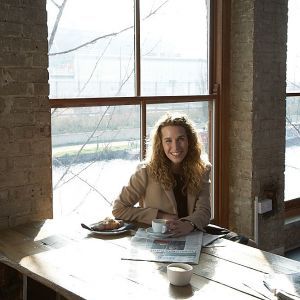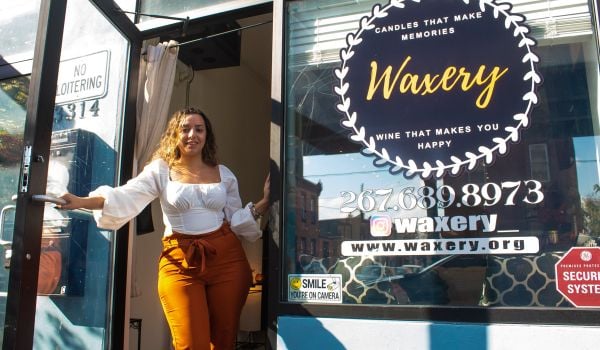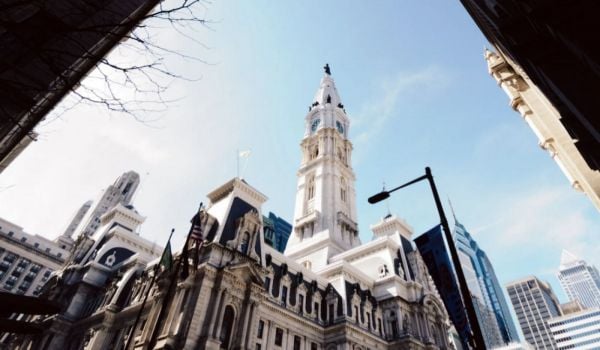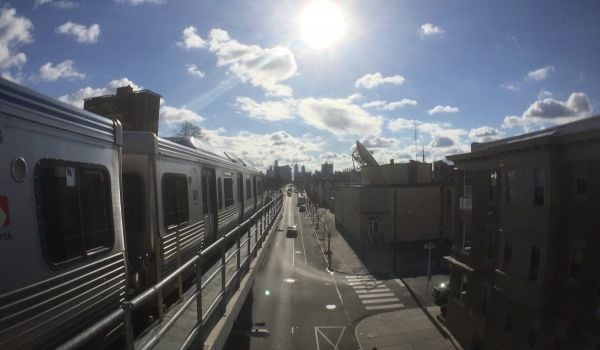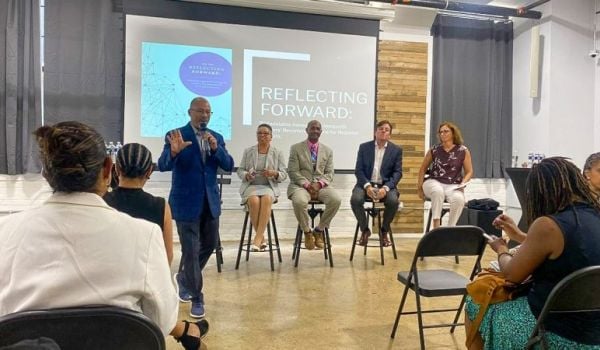Today Philadelphia moved one step closer to having an eight-story hub dedicated to the city’s creative community.
Developer Lindsey Scannapieco, a 2014 Next City Vanguard member, is bringing her background in planning, real estate and design to create a space focused on design, entrepreneurship and fabrication. Her company, Scout LLC, was chosen by Philadelphia Industrial Development Corporation (PIDC) and the School Reform Commission (SRC) to redevelop the Edward W. Bok School building after a competitive open auction process. The closed school is one of nearly two dozen that the school district is trying to offload as it copes with a deficit of more than $80 million and Scannapieco’s project supports the hope that Philadelphia’s schools can be reinvented.
Taking up an entire city block and encompassing 340,000 square feet, Bok was a technical school, and Scannapieco notes, “This has always been a space of working and learning and that’s so embedded in the structure of the building. That is something we’ll really honor, preserve and continue.”
Scannapieco is fully aware that Philadelphia has maker spaces like NextFab, and co-working spaces like CultureWorks and Impact Hub yet she points to a gap in South Philadelphia — the neighborhood where Scannapieco lives and which has undergone a decade-long shift from a modest Italian-dominated neighborhood to one where real estate had rapidly appreciated and some of the city’s best restaurants and retail have taken root. NextFab has thrived in the neighborhood and as the area continue to attract new residents, there will be only be more need for creative spaces, the Philadelphia native says.
“Our intention is to…provide space that will embrace the creative energy of the neighborhood and connect its vibrant community of entrepreneurs, makers and artists.”
Prior to living in Philadelphia, Scannapieco lived and worked in London, where she worked on projects that ranged in scale from temporary installations to the London 2012 Olympics. Those experiences informed how she is approaching such a large building. “Working on the Olympics and for a large public sector entity, I got an understanding of processes and strategy. Having experience with that kind of larger planning will be important to a project of this scale.”
Scannapieco is drawing inspiration from the NDSM Wharf in Amsterdam — an enormous hangar with constant creative activity — as well as Bootstrap Company and the White Building , both located in London. Like those projects, the Bok building will be one where people can live, work and create under one roof.
As cities recognize the importance of supporting the creative economy, philanthropic entities such as ArtPlace have also rushed in to contribute capital for creative placemaking and arts-focused real estate projects. For now, this project will be entirely privately developed. Scannapieco won’t rule out having some arm of the project that could be supported by grants, but says there are advantages to private development such as “having complete control and a holistic vision.” She can also better respond to market demand and phase the project.
Scannapieco’s plan is to close on the building in 90 days, and start construction six months later. Renovating the ground floor will be the first priority. And given her past work on temporary installations, she’s says, “I’m interested in what role interim uses can play.” Eager to activate the space, she notes, “The longer something stays quiet, the harder it is to revive. I want to showcase that something is going on and changing there.”

Diana Lind is the former executive director and editor in chief of Next City.


